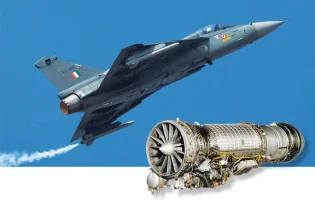- Views: 1K
- Replies: 1
India’s Project-75(I) is more than just the next step in naval procurement. It showcases a decisive leap in undersea warfare capabilities. India, with Project-75(I), can conduct continuous covert patrols across strategic sea lanes, bolstering its role as a security provider in the region, a report stated on Tuesday.
By incorporating Air Independent Propulsion (AIP) systems into its upcoming line of conventional submarines, the Indian Navy is set to enhance underwater endurance from two days in current Scorpene-class boats to nearly three weeks. This significant shift will ripple across the strategic calculus of the Indian Ocean, changing both the dynamics of deterrence and India’s capacity to showcase its power far from its shore, India Narrative reported.
“At the heart of Project-75(I) is the fuel-cell-based Air Independent Propulsion system. Unlike traditional diesel-electric submarines, which must surface or snorkel regularly to recharge batteries, AIP enables submarines to generate electricity underwater without atmospheric oxygen. This not only lengthens submerged endurance but also drastically reduces opportunities for detection. By staying below the waves for extended periods, submarines equipped with AIP are harder to track and target, which in modern naval warfare can mean the difference between mission success and catastrophic loss,” the report highlighted.
The primary advantage of AIP is operational endurance. While Scorpene-class submarines could perform stealth missions for about 48 hours before needing to expose themselves, AIP-equipped submarines can now operate underwater for almost three weeks. This significantly broadens mission capabilities, from continuous surveillance deep within contested waters to long-range intelligence gathering along adversary coastlines.
Prolonged submersion also operates as a force multiplier. Each additional day underway not only enhances efficiency of the mission but also reduces vulnerability to anti-submarine warfare assets. Modern airborne platforms, surface ships equipped with towed sonar arrays, and underwater sensor networks are formidable threats – dangers that are predominantly mitigated when a submarine can remain hidden for weeks at a stretch, India Narrative said in a report.
“In the context of India’s primary maritime rivals, China and Pakistan, this capability closes a dangerous gap. Both nations already field AIP-equipped submarines. By matching and potentially surpassing these endurance benchmarks, India is rebalancing the undersea deterrence equation in the Indian Ocean Region (IOR). In naval strategy, deterrence is as much about perception as it is about capability. An adversary uncertain of a submarine’s location must commit disproportionate resources to locate and counter it,” wrote Arjun Mehta in IN.
“The reduced acoustic and radar signatures of AIP boats, coupled with fewer surfacing events, multiply this uncertainty. This is especially critical in the IOR, where control over chokepoints like the Malacca Strait or the approaches to the Persian Gulf can have global economic implications. With Project-75(I), India can maintain continuous covert patrols across these strategic sea lanes, reinforcing its position as a security provider in the region,” he added.
Apart from military utility, Project-75(I) is an industrial catalyst, the report said. The programme requires 45 per cent indigenisation in the initial submarine, increasing to 60 per cent by the sixth one. This structured localisation not only bolsters the domestic defence ecosystem but also ensures technological independence for upcoming enhancements. By developing domestic expertise in submarine construction, India is making investments in capabilities that will last for years.


